I wish now I had taken a lot more pictures of the Berlin Wall in 1997. Not until recently scanning the prints I have, did I realize some of the more historically important images I had
captured and what they actually depicted.
I checked the Internet and there are still sections of the wall that were preserved and now are historically protected.
Unlike what is happening to our historical statues and structures here in the US.
On August 13, 1961, the Communist government of the German Democratic Republic (GDR, or East Germany) began to build a barbed wire and
concrete “Antifascistischer Schutzwall,” or “antifascist bulwark,” between East and West Berlin. The official purpose of this Berlin Wall was to keep
Western “fascists” from entering East Germany and undermining the socialist state, but it primarily served the objective of stemming mass defections
from East to West. The Berlin Wall stood until November 9, 1989, when the head of the East German Communist Party announced that citizens of the
GDR could cross the border whenever they pleased. That night, ecstatic crowds swarmed the wall. Some crossed freely into West Berlin,
while others brought hammers and picks and began to chip away at the wall itself. To this day, the Berlin Wall remains one of the most powerful and enduring symbols of the Cold War.
Berlin Wall sections that remain, as of 2020
In 1990, after the Wall had ceased to be functional, the eastern side of the wall was painted by 118 artists from 21 countries,
resulting in the longest open air gallery in the world.

Dave Kusel standing next to a section of the Berlin Wall in 1997

Note the "East Side Hotel" on the other side of the wall.

Star of David
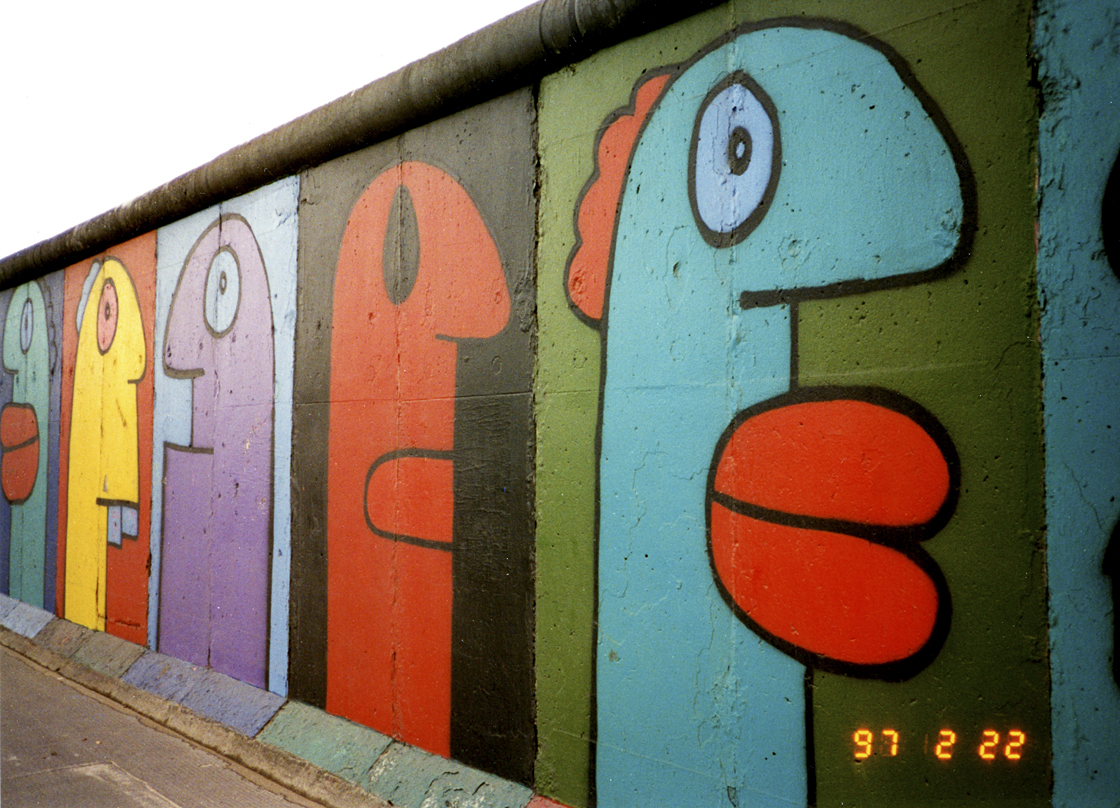


Painted November 9, 1989

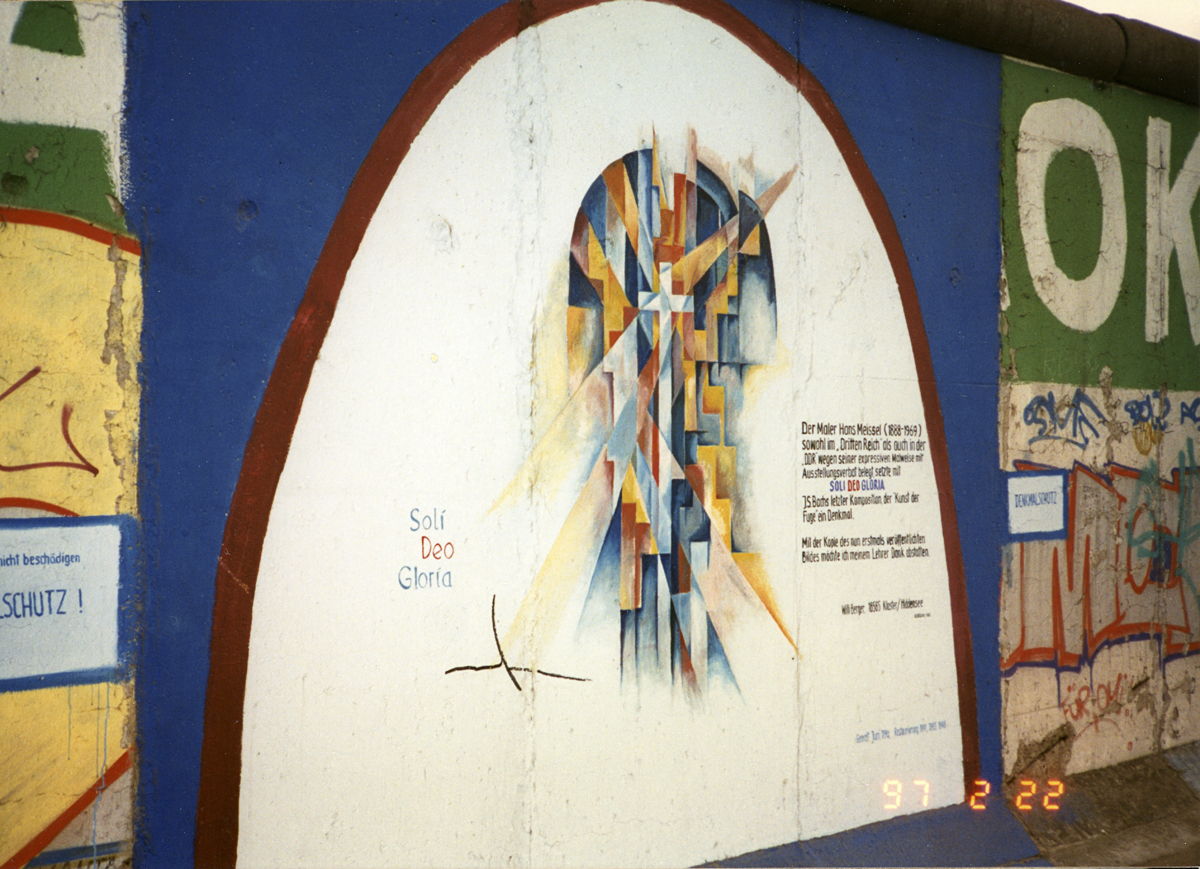
1997 - Soli Deo Gloria (Glory to God Alone)
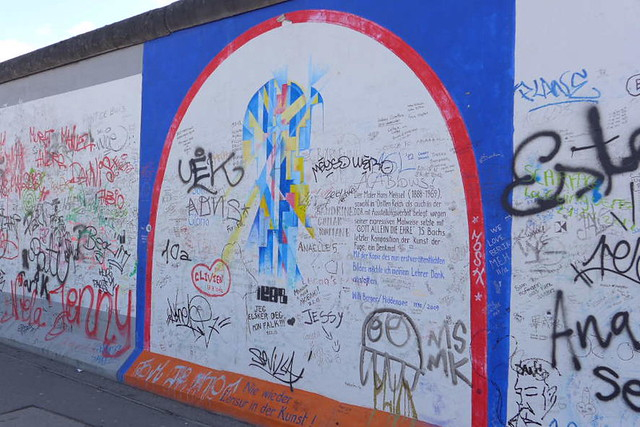
Image from the internet that shows graffiti on this section years after
I took my picture.

This section of the wall was originally painted in 1989 when Germany was reunified,
it has since remained as a memorial to freedom, and the images painted on it have remained.
They have, however, been badly damaged by graffiti, so for the 20th anniversary of the reunification in 2011, the original artists were invited to repaint their original images.


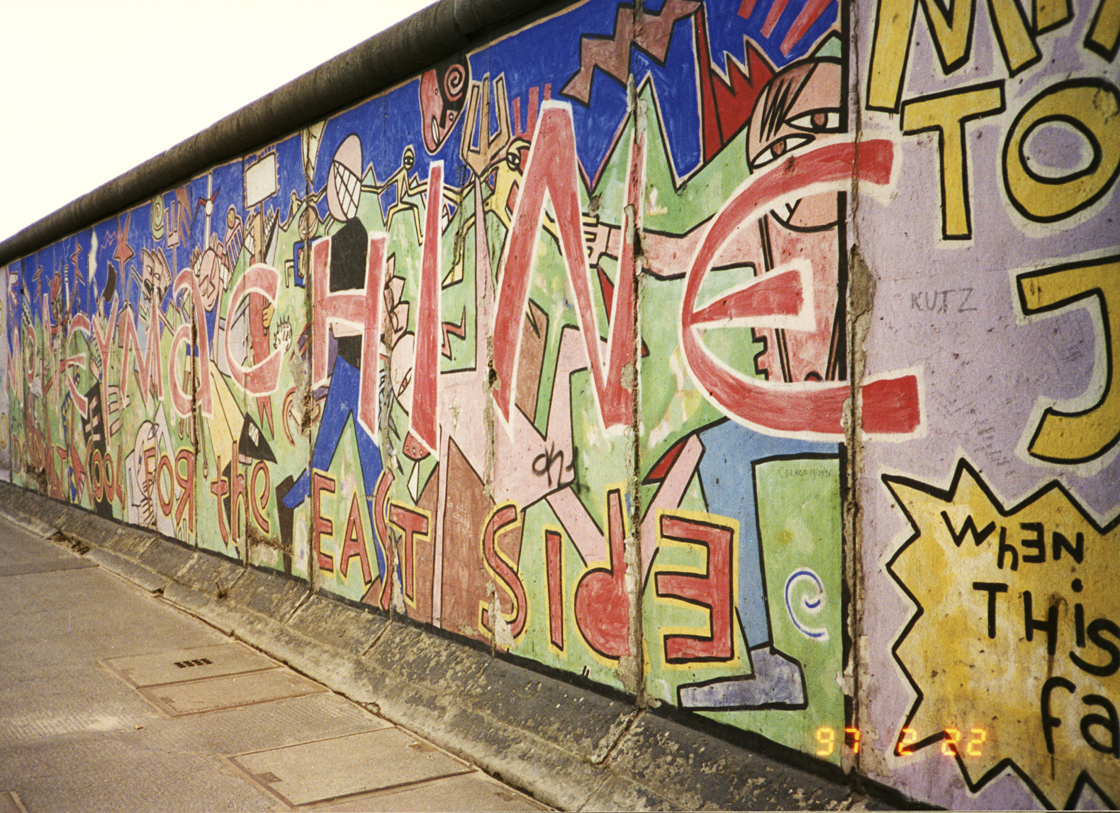

Painted August 1990

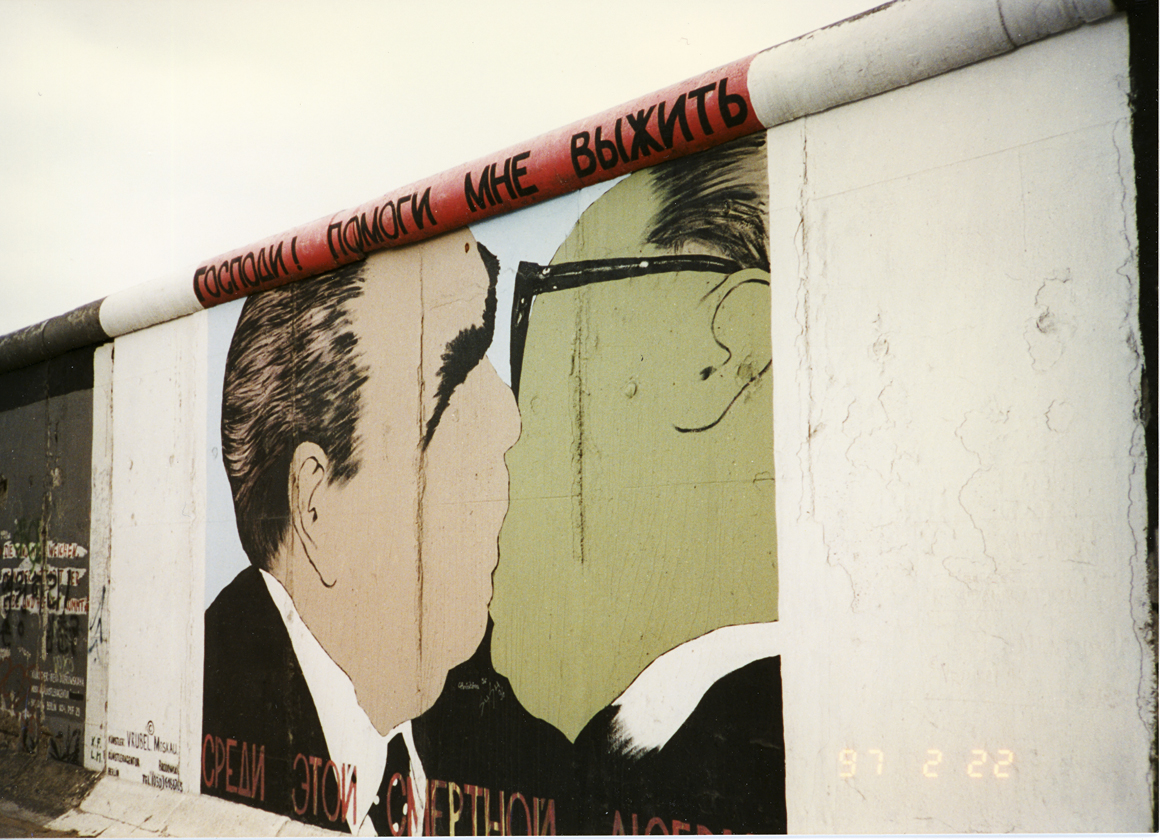
My God, Help Me to Survive This Fatal Attraction, romanized: Góspodi! Pomogí
mne výzhit' sredí étoy smértnoy lyubví; German: Mein Gott, hilf mir, diese tödliche Liebe zu überleben), sometimes referred to as the Fraternal Kiss
(German: Bruderkuss), is a painting by Dmitri Vrubel on the eastern side Berlin wall.
Painted in 1990, it has become one of the best known
pieces of Berlin wall art. The painting depicts Leonid Brezhnev and Erich Honecker in a socialist fraternal kiss, reproducing a photograph
taken in 1979 during the 30th anniversary celebration of the foundation of the German Democratic Republic.

Actual 1979 photo of Leonid Brezhnev and Erich Honecker
















